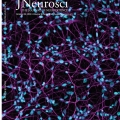Today the Journal of Neuroscience published our work on Latency coding as a Featured article:
Neuronal Response Latencies Encode First Odor Identity Information across Subjects
Marco Paoli, Angela Albi, Mirko Zanon, Damiano Zanini, Renzo Antolini and Albrecht Haase
Journal of Neuroscience 24 October 2018, 38 (43) 9240-9251; DOI:https://doi.org/10.1523/JNEUROSCI.0453-18.2018
Abstract
Odorants are coded in the primary olfactory processing centers by spatially and temporally distributed patterns of glomerular activity. Whereas the spatial distribution of odorant-induced responses is known to be conserved across individuals, the universality of its temporal structure is still debated. Via fast two-photon calcium imaging, we analyzed the early phase of neuronal responses in the form of the activity onset latencies in the antennal lobe projection neurons of honeybee foragers. We show that each odorant evokes a stimulus-specific response latency pattern across the glomerular coding space. Moreover, we investigate these early response features for the first time across animals, revealing that the order of glomerular firing onsets is conserved across individuals and allows them to reliably predict odorant identity, but not concentration. These results suggest that the neuronal response latencies provide the first available code for fast odor identification.
SIGNIFICANCE STATEMENT Here, we studied early temporal coding in the primary olfactory processing centers of the honeybee brain by fast imaging of glomerular responses to different odorants across glomeruli and across individuals. Regarding the elusive role of rapid response dynamics in olfactory coding, we were able to clarify the following aspects: (1) the rank of glomerular activation is conserved across individuals, (2) its stimulus prediction accuracy is equal to that of the response amplitude code, and (3) it contains complementary information. Our findings suggest a substantial role of response latencies in odor identification, anticipating the static response amplitude code.


